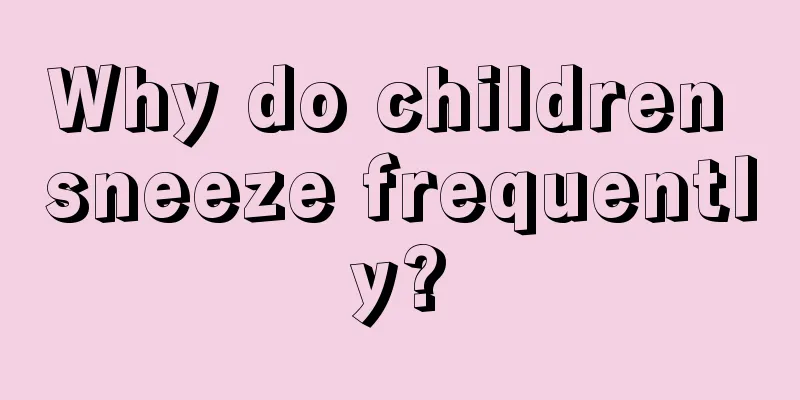What should I do if my child is diagnosed with thalassemia during prenatal check-up?

|
With the development of the times and the advancement of science and technology, people's physical fitness has been declining. Various neonatal diseases are more likely to occur, various genetic diseases or some gene mutations have become more and more common, and symptoms similar to some thalassemia are also found from time to time. Today, the editor will introduce to you some information about thalassemia, so that everyone can have a more objective and comprehensive understanding of what thalassemia is. Thalassemia, formerly known as thalassemia, is also known as sea anemia. It is a group of hereditary hemolytic anemia diseases. Anemia or pathological condition caused by the absence or deficiency of one or more globin chains in hemoglobin due to inherited gene defects. Due to the complexity and diversity of gene defects, the type, number and clinical symptoms of the missing globin chains vary greatly. They are named and classified according to the type of globin chain that is missing and the degree of deficiency. The molecular structure and synthesis of globin chains are determined by genes. The γ, δ, ε and β globin genes make up the "β gene family", and the ζ and α globin genes make up the "α gene family". Normal people inherit two α-globin genes (αα/αα) from each parent to synthesize enough α-globin chains; and inherit one β-globin gene from each parent to synthesize enough β-globin chains. The disease is caused by the deletion or point mutation of the globin gene, which leads to the disorder of peptide chain synthesis. There are four types of thalassemia: α, β, δβ and δ. Among them, β and α thalassemia are more common. Thalassemia minor does not require any specific treatment. Thalassemia intermedia and major should be treated with one or more of the following methods. Blood transfusion and iron chelation therapy are still one of the important treatment methods. Therefore, in daily life, both adults and children need to exercise, but they must be careful to persist and not give up halfway. They must exercise regularly to enhance their physical fitness. Only in this way can they effectively resist the occurrence of various diseases, reduce the chances of various diseases, and lay a good physical foundation for their next generation. |
<<: How to deal with a child who has a fever and cold limbs?
>>: What should I do if a 4-year-old child has a fever of 35.5 degrees?
Recommend
What should I do if my baby eats preservatives?
Preservatives are a common substance used to pres...
Why does the baby's brain space widen?
Widening of the intercerebral space is a common h...
Physical cooling methods for infants with fever
Every child will encounter some health problems o...
What causes children's cold hands and feet?
Many young children have cold hands and feet, whi...
What is the height and weight of a one year and seven month old baby?
A baby is an important member of a family. Most f...
How to treat a child with a viral cold
There are many types of colds, some are viral, an...
Why do newborns peel and how to care for them
Many mothers should know that when the baby is ju...
Treatment of scab on baby's head
The incidence of scabs on babies' heads is ve...
How long should a newborn baby be exposed to the sun?
After a newborn is born, many parents may not hav...
Why do children develop cyclic vomiting syndrome?
In our daily life, it is common to see children v...
What are the retinal examination items for premature infants?
Pregnant women nowadays do not pay attention to t...
How to inject hepatitis A vaccine for babies
Newborn babies are very weak and have no resistan...
What to do if a child coughs in the morning
Many parents must have encountered situations whe...
What is the cause of the blue vein on the baby's nose?
There are many blood vessels and organs in the hu...
What causes jaundice in children?
Children's health is generally recognized as ...









